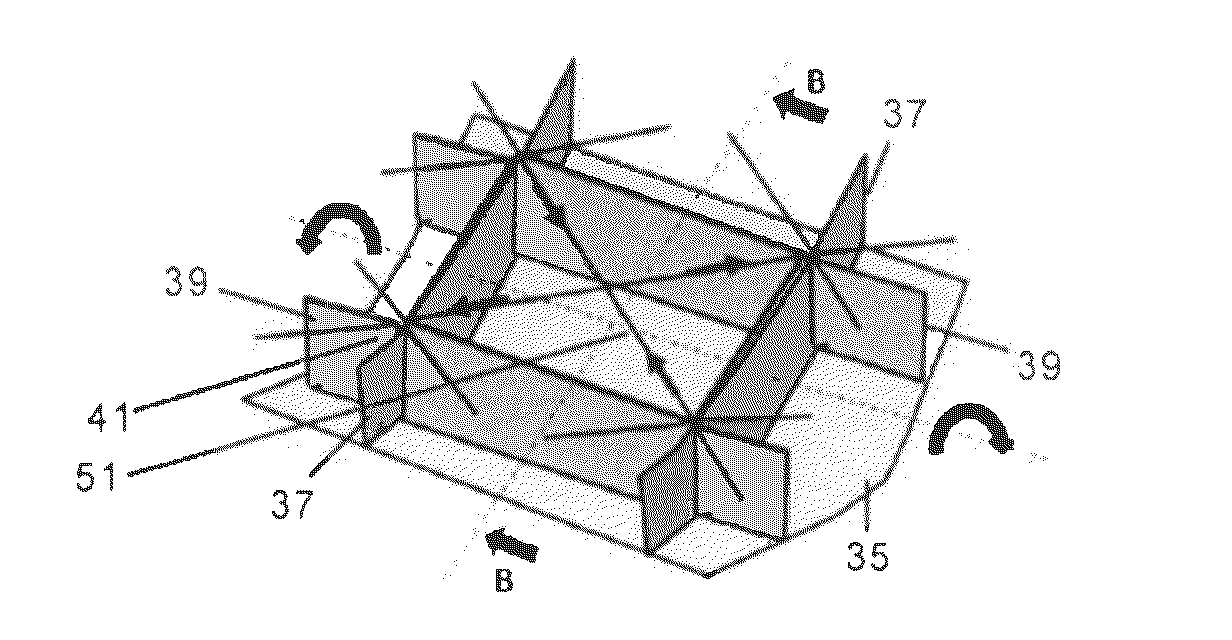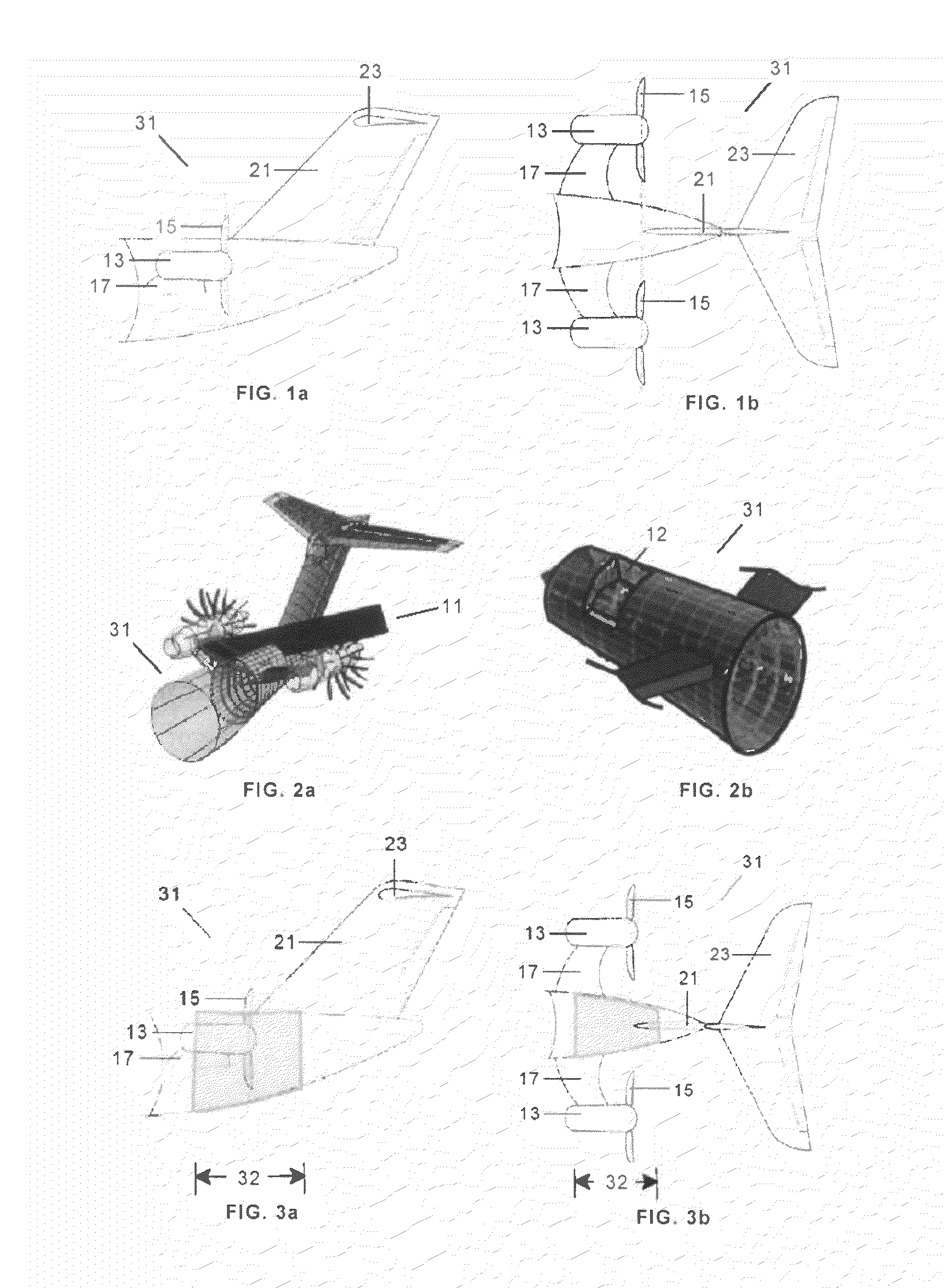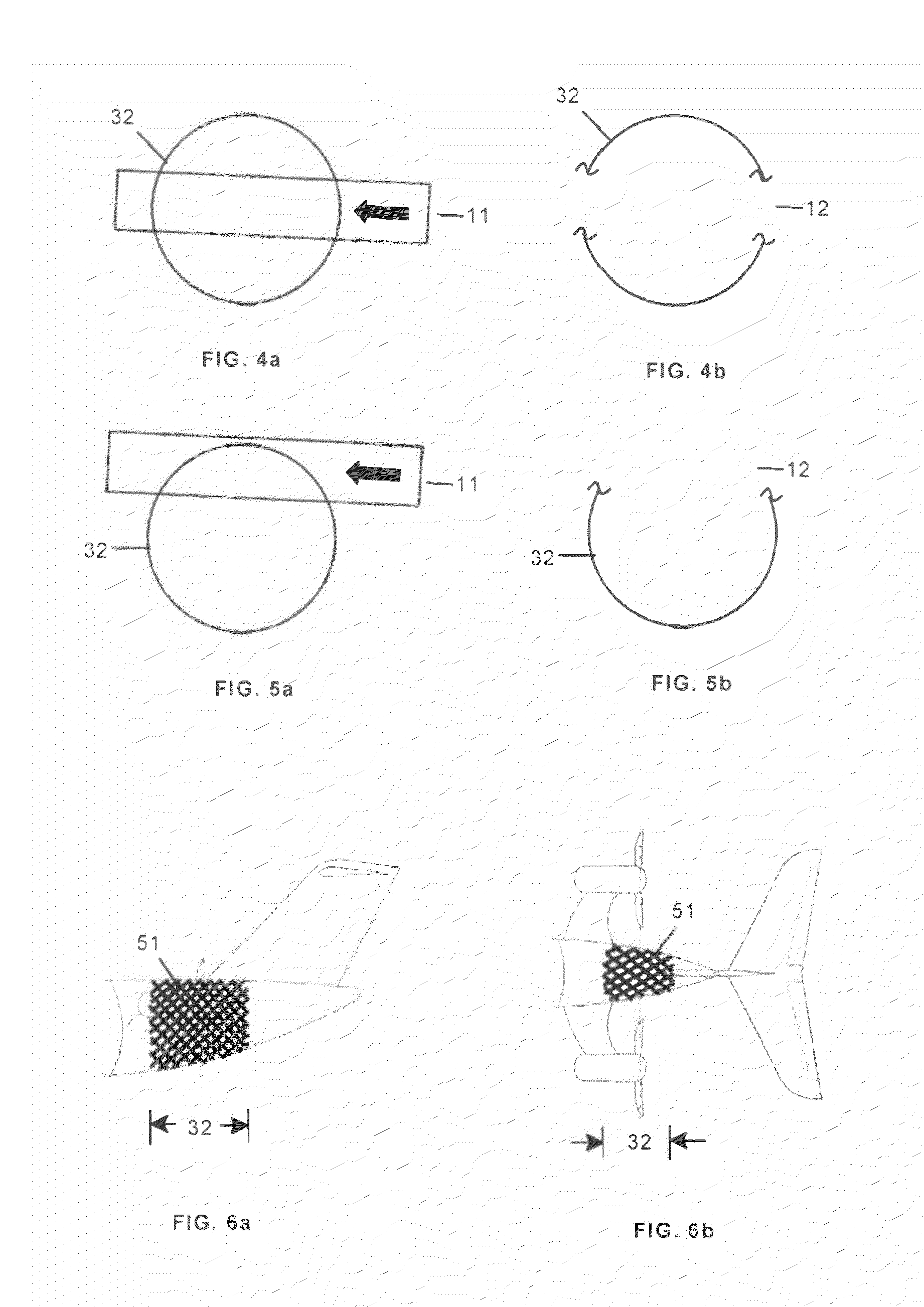Impact resistant and damage tolerant aircraft fuselage
a fuselage and impact resistance technology, applied in the field of fuselage section, can solve the problems of increased torsional load, affecting the safety of the aircraft, and releasing debris and impacting the fuselage,
- Summary
- Abstract
- Description
- Claims
- Application Information
AI Technical Summary
Benefits of technology
Problems solved by technology
Method used
Image
Examples
Embodiment Construction
[0055]Although the present invention refers to any fuselage section affected by any impact of a body capable of producing a significant fuselage damage, the following detailed description of the invention will be referred to a rear fuselage section affected by the impact of a body such as a detached blade or other debris released from a propulsion system located in the rear fuselage.
[0056]In an aircraft having a propulsion system 13 with external blades 15 attached to the rear fuselage 31 by means of upstream pylons 17 there is a risk of undergoing a severe damage in, for instance, an event where a blade 15 is detached and impacts the rear fuselage 31 with high energy. In the aircraft shown in FIGS. 1a and 1b the empennage comprises a vertical tail plane 21 and an upper horizontal tail plane 23 behind the propulsion system 13.
[0057]As shown in FIGS. 2a and 2b a released blade can follow a trajectory 11 impacting on the rear fuselage 31 and producing a large damage 12.
[0058]FIGS. 3a ...
PUM
 Login to View More
Login to View More Abstract
Description
Claims
Application Information
 Login to View More
Login to View More - R&D
- Intellectual Property
- Life Sciences
- Materials
- Tech Scout
- Unparalleled Data Quality
- Higher Quality Content
- 60% Fewer Hallucinations
Browse by: Latest US Patents, China's latest patents, Technical Efficacy Thesaurus, Application Domain, Technology Topic, Popular Technical Reports.
© 2025 PatSnap. All rights reserved.Legal|Privacy policy|Modern Slavery Act Transparency Statement|Sitemap|About US| Contact US: help@patsnap.com



